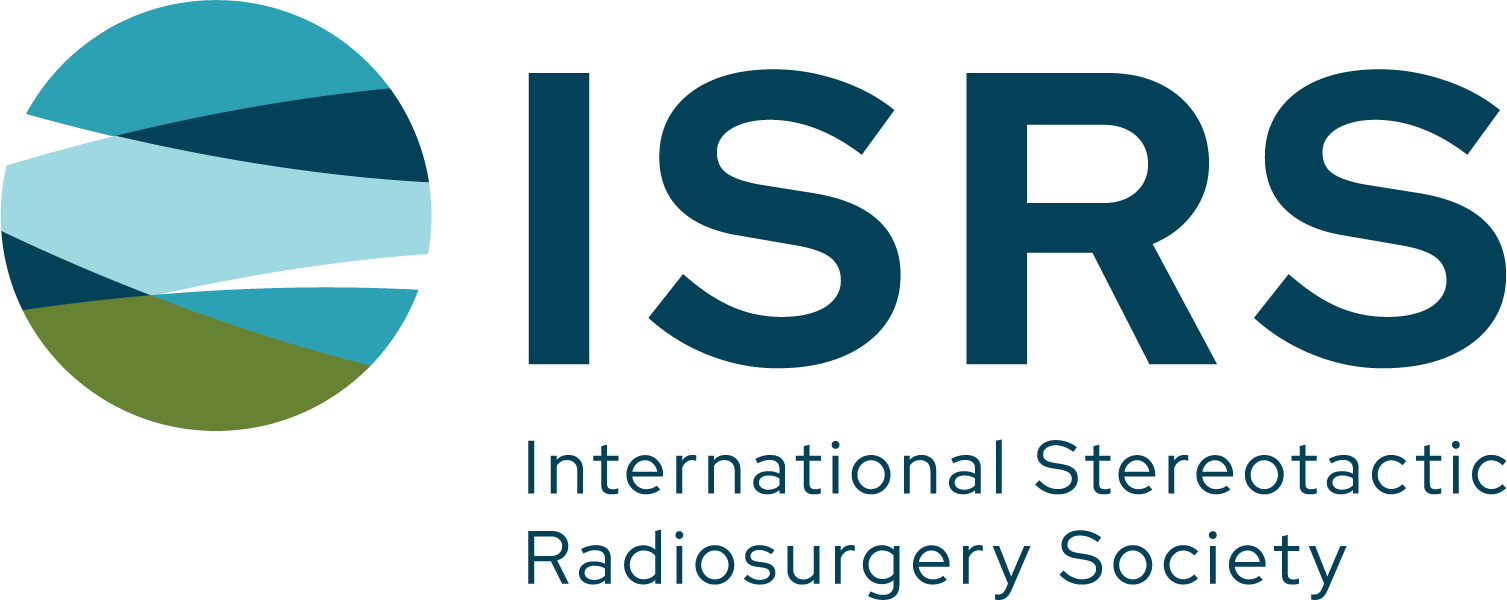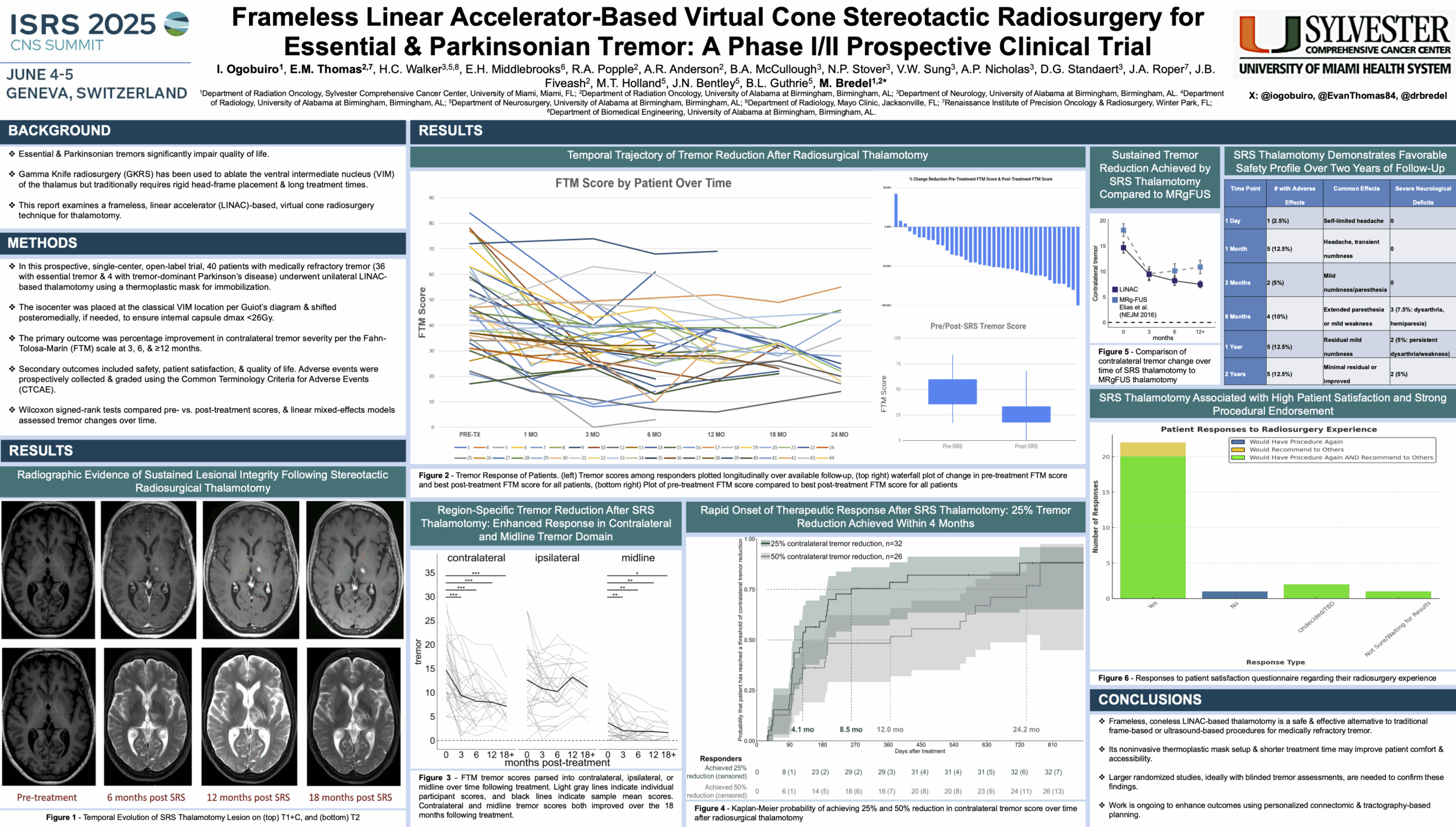Background: Essential & Parkinsonian tremors significantly impair quality of life. Gamma Knife radiosurgery (GKRS) has been used to ablate the ventral intermediate nucleus (VIM) of the thalamus but traditionally requires rigid head-frame placement & long treatment times. This report examines a frameless, linear accelerator (LINAC)-based, virtual cone radiosurgery technique for thalamotomy.
Methods: In this prospective, single-center, open-label trial, 40 patients with medically refractory tremor (36 with essential tremor & 4 with tremor-dominant Parkinson’s disease) underwent unilateral LINAC-based thalamotomy using a thermoplastic mask for immobilization. The isocenter was placed at the classical VIM location per Guiot’s diagram & shifted posteromedially if needed to ensure internal capsule dmax <26Gy. The primary outcome was percentage improvement in contralateral tremor severity per the Fahn-Tolosa-Marin (FTM) scale at 3, 6, & ≥12 months. Secondary outcomes included safety, patient satisfaction, & quality of life. Adverse events were prospectively collected & graded using the Common Terminology Criteria for Adverse Events (CTCAE). Wilcoxon signed-rank tests compared pre- vs. post-treatment scores, & linear mixed-effects models assessed tremor changes over time.
Results: With a median follow-up of 26 months, 90% of participants achieved ≥10% improvement in global FTM score at 6 months (p<0.001). The mean decrease in total FTM score was 54.6% (SD 25.0%). Four patients (10%) experienced significant neurological side effects (dysarthria, focal hemiparesis) requiring medical therapy; these events emerged around 6 months post-treatment & generally improved with steroids or bevacizumab. Transient paresthesias were the most common minor side effect. Among the 4 patients with Parkinsonian tremor, similar tremor improvement was observed, though baseline severity was lower. A durable contralateral tremor reduction was noted compared to MR-guided focal ultrasound.
Conclusions: Frameless, coneless LINAC-based thalamotomy is a safe & effective alternative to traditional frame-based or ultrasound-based procedures for medically refractory tremor. Its noninvasive thermoplastic mask setup & shorter treatment time may improve patient comfort & accessibility. Larger randomized studies, ideally with blinded tremor assessments, are needed to confirm these findings. Work is ongoing to enhance outcomes using personalized connectomic & tractography-based planning.


